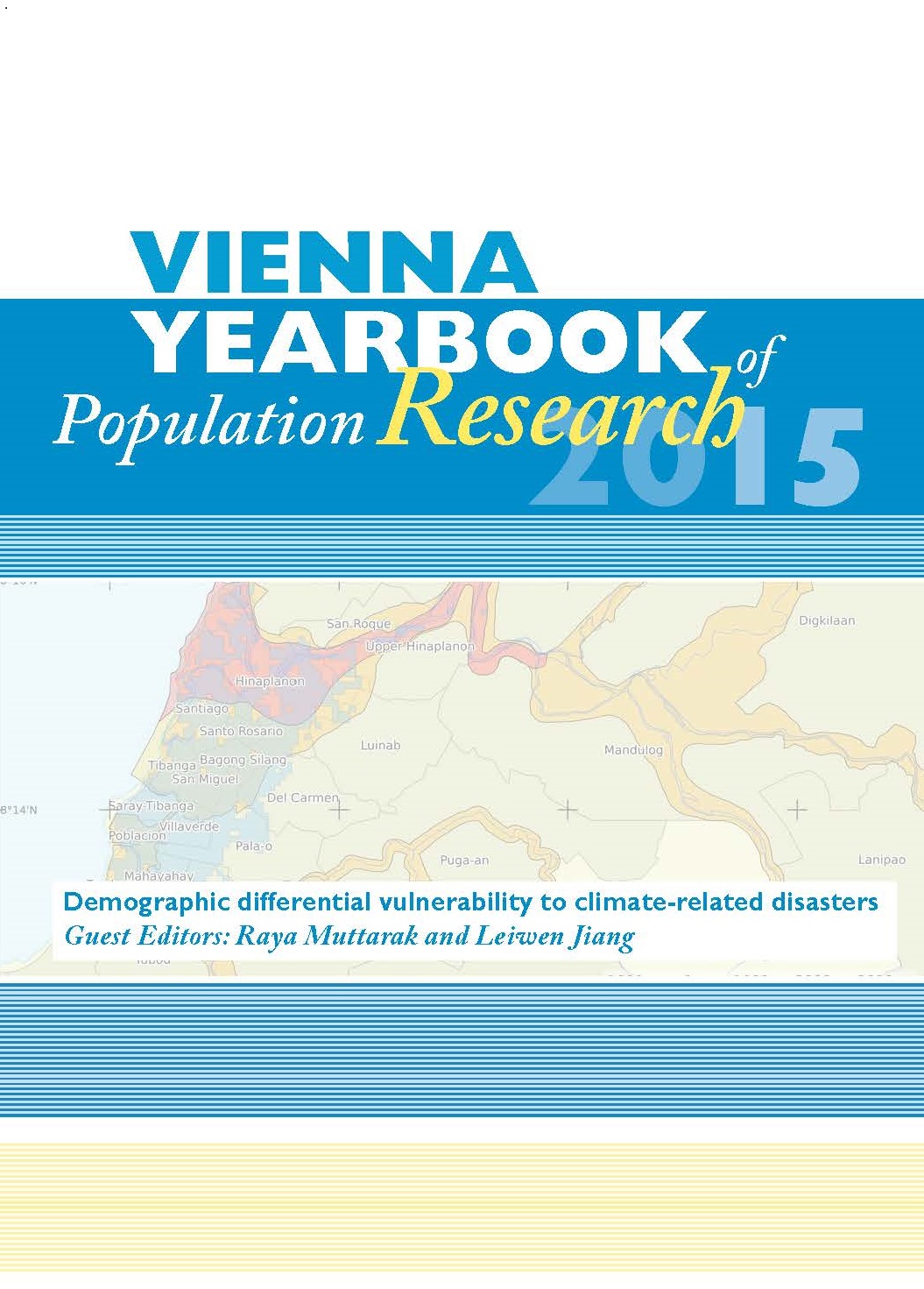 |
 |
Vienna Institute of Demography (Ed.)
Vienna Yearbook of Population Research 2015
Special issue on Demographic differential vulnerability to climate-related disasters
Zhongwei Zhao,
Yuan Zhu,
Edward Jow-Chung Tu
S. 71 - 90 doi: 10.1553/populationyearbook2015s71
Verlag der Österreichischen Akademie der Wissenschaften doi: 10.1553/populationyearbook2015s71
Abstract:
Growing evidence indicates that world temperatures have increased in recent history, and that this trend is likely to continue in the future. The rise in global temperatures has been accompanied by an increase in extreme weather events, which often have devastating environmental, economic, demographic, and social effects. As concern about the impact of climate change has grown in recent years, there has been a considerable increase in the number of studies published on the effects of extreme temperatures. However, detailed, systematic, and historical investigations into the relationship between temperature and mortality relationship are still difficult to find. This study fills some of these gaps. By examining the impact of extreme temperatures on mortality in Taiwan in the 1970s, our aim is to answer the following questions: (1) Is a lower or a higher temperature recorded in winter or summer related to higher daily mortality? (2) Is mortality higher in particular years with extreme temperatures than it is in the corresponding periods of other years with normal temperatures? (3) Finally, if more extreme temperatures are indeed associated with higher mortality, what kinds of people tend to face higher mortality risks? This study shows that variations in daily mortality were related to changes in temperature in Taiwan over the study period. Cold temperatures in the winter, hot temperatures in the summer, and unusually cold or hot temperatures were all associated with higher mortality. In comparison with other times of the year, the proportions of people who died at old or very young ages were relatively high during cold periods. The proportions of deaths caused by cardiovascular diseases were also relatively high, and these deaths contributed to the high mortality levels in winter time. Meanwhile, during the hot periods relatively high proportions of children and young people died of injuries or poisoning, and relatively high proportions of people died of respiratory diseases; both of these causes of death were closely related to mortality increases in the summer. In comparison with recent decades, however, these patterns were more observable in the 1970s, when the public health and the socioeconomic development levels in Taiwan were not as advanced as they are today.
2016/09/20 19:31:49 Object Identifier:
0xc1aa5576 0x00344f4d
Rights:All rights reserved.For questions regarding copyright and copies please contact us by email.
Refereed Articles
Differential mortality from extreme climate events
Differential mortality patterns from hydro-meteorological disasters:
Evidence from cause-of-death data by age and sex (Emilio Zagheni, Raya Muttarak, Erich Striessnig)
Daily mortality changes in Taiwan in the 1970s: An examination of the
relationship between temperature and mortality (Zhongwei Zhao, Yuan Zhu and Edward Jow-Ching Tu)
Spatial patterns of social vulnerability to weather and climate extremes
Assessing the effectiveness of a social vulnerability index in predicting heterogeneity in the impacts of natural hazards: Case study of the Tropical Storm Washi flood in the Philippines (J. Andres F. Ignacio, Grace T. Cruz, Fernando Nardi and Sabine Henry)
Social vulnerability to floods in two coastal megacities: New York City and Mumbai (Alex de Sherbinin and Guillem Bardy)
Who perceives what? A demographic analysis of subjective perception in rural Thailand (Jacqueline Meijer-Irons)
Who is concerned about and takes action on climate change? Gender and education divides among Thais (Raya Muttarak and Thanyaporn Chankrajang)
Forecasting future societies vulnerability and adaptive capacity through the lens of human capital
Future differential vulnerability to natural disasters by level of education (Erich Striessnig and Elke Loichinger)
The demography of human development and climate change vulnerability: A projection exercise (Jesus Crespo Cuaresma and Wolfgang Lutz)
A four-dimensional population module for the analysis of future adaptive capacity in the Phang Nga province of Thailand (Elke Loichinger, Samir KC and Wolfgang Lutz)
|




 Home
Home
 Print
Print
 References
References
 Share
Share
